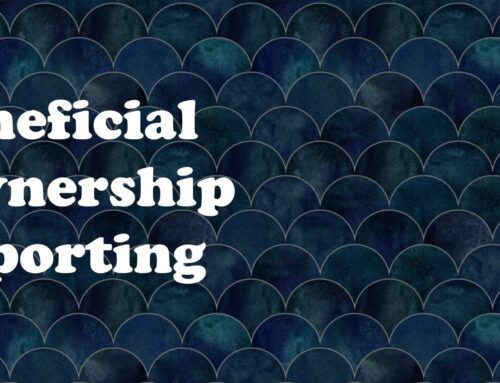In the largest possible sense, handling the cash flow for your new business is exactly what it sounds like ‒ you’re trying to get the clearest level of visibility into “money coming in versus money going out” as possible. But managing cash flow is also about a lot more than that, too. It’s about making sure that you not only have the funds on hand to “keep the lights on” and to remain operational, but that you can also capitalize on opportunities as they arise instead of watching them pass you by. It’s about making sure you have access to what you need to not only put your best foot forward today, but to better prepare yourself for challenges that may develop six months or even a year from now, too.
All of that is to say that the importance of gaining a precise understanding of your cash flow cannot be overstated.
Indeed, running out of money is also one of the most common ways that new businesses in particular are forced to close their doors ‒ usually very quickly after their initial launch. But while this is certainly an essential topic, it isn’t necessarily a difficult one. Properly managing the cash flow for your new business is a lot more straightforward than you might be fearing ‒ you just need to keep a few key things in mind.
Moreover, if you are new to the business world and unsure of your capabilities, it can be beneficial to acquire some knowledge and external assistance. For that, you can sign-up for an online business schooling program, where you can learn all about multiple business niches, strategies to make profits, sales outcomes, etc. There are many such training programs available for you to explore by checking out a few reviews, such as Kibo eclipse reviews, to gain insight on what you need.
You can further go through below mentioned pointers on how to properly manage the cash flow for your new business.
The “Breakeven” Point
By far, one of the most important metrics for you to understand about your new small business is your “breakeven” point ‒ that is, the point at which your current (or projected) revenues will allow you to meet all of your operating expenses. This is the bare minimum amount of money you need to keep your employees paid, to keep your bills up-to-date and to keep your doors open ‒ and unfortunately, it usually changes on a regular basis. You may need to keep track of all the extra spending required for your business to thrive. Simultaneously, you can also look for better, more affordable, yet effective alternatives. For example, if you want to advertise your business, you may have to spend money like water to get noticed by the audience, whereas you could go with an LED sign and install it beneath your building alongside the one on your floor. You can provide information to your clients/audience in the form of text, images, or video with just a few clicks. If interested, you can contact the houston sign company or any other firm in your area that can assist you with signboard advertising.
As your business continues to scale, your revenue should increase ‒ but your expenses will increase, too. Therefore, it is of paramount importance that you don’t make finding your “breakeven” point something you “do once and forget about.” For the best results, you should return to this figure on a regular basis to make sure you: a) understand what it is in the literal sense; and b) understand what actions you need to perform to actually achieve that.
Once you have a handle on your breakeven point, you’ll at the very least be able to remain functioning ‒ which means you can start to devote more of your attention to actually growing into the type of business you want to be running in the first place.
The Importance of Cash Reserves
If you take a look at some of the other reasons why small businesses usually fail, you’ll quickly see that they’re closely related:
- About 79% of businesses fail because they start out with too little money, according to one study.
- 77% run into troubles when they fail to price properly, or don’t include all necessary items when setting prices.
- 73% close because they were either too optimistic about achievable sales, about the money required to generate those sales, or both at the same time.
These types of issues are common with small businesses, and particularly with those controlled by an entrepreneur who may be running their first SMB to begin with. But for as much as all of these ideas ultimately tie directly back into cash flow management, they also underline another very important best practice to that end:
The Value of Maintaining a Cash Reserve
- Absolutely every new business ‒ regardless of its size or the industry it’s in ‒ should expect problems to crop up on a regular basis. Entrepreneurship is very much one of those areas where “Murphy’s Law” rules the day. Working hard to keep a quality cash reserve will not only help lessen the ultimate impact of those problem times, but it can also help reduce stress and distractions, too.
- If you have no cash reserve, every problem becomes a major cash flow problem. But at the very least if you have something to fall back on, you have the clarity you need to learn from the situation and double down with your focus on growing your business moving forward.
Take Control of Those Receivables
Typically, new businesses don’t have a problem with the “money out” side of cash flow management. Even if business leaders do start to spend money too quickly, hopefully, they’re in a position to recognize it so that they can do something about it as soon as possible.
But it’s difficult to “do something about it” if you’re not bringing any money in, which is why taking control over your receivables is so important.
If a client owes you $1,000, but you have no idea when or how they’re going to pay it, do you really have $1,000? No, not really ‒ which is why you should try to make any invoices “due immediately” if you can, along with a mobile credit card processor. If someone does need some more time to pay, try to make sure the terms give them no longer than a week or two at most. This is the future of your business that we’re talking about, after all. Also, one of the most compelling reasons to use a mobile credit card processor is that, in most cases, it will save you money because you only pay a processing fee for each transaction. You can visit websites like https://www.easypaydirect.com/merchant-accounts/mobile-credit-card-processing/ to learn more about the pricing, features, and contracts you should look for in a mobile credit card processor.
Depending on your specific clients, you may even want to offer discounts for people who pay early. This can be a great way to incentivize them to get those invoices paid and to get that essential money into YOUR proverbial pocket.
At a bare minimum, you should have someone on staff who is tasked with maintaining visibility into receivables and who can follow up with customers who have yet to pay in a stern-yet-friendly way.
The more money you bring into the business, the more money you can spend on those initiatives that will continue driving your organization forward.
Every Dollar Spent Has a Purpose
Everyone knows that you should really only spend money on essentials, but in the fragile early days of a new business, you need to take that concept one step further.
With every last purchase you make, you need to be able to SEE the verified return on investment that it will bring with it. If you’re hiring a web development company w.expedition.co/services/development/los-angeles”>https://www.expedition.co/services/development/los-angeles for instance), you need to see a , you need to see a website that matches your expectations. Or if you’re buying a new piece of equipment, what does it actually get you? Will it speed up your production, allowing you to more quickly achieve a larger volume of higher quality finished products? In that case, the return on investment absolutely justifies the initial money you need to spend. If you are starting a new shop, however, and need some stock to fill it with and sell, then you can often end up forking out a lot of money here. However, you could opt for using ecommerce wholesale companies like Abound, which you could try here to join as a retailer and make your business contents you own.
However, if you really want that new piece of equipment simply because it’s the “latest and greatest,” that isn’t really the “good idea” you thought it was.
Another example of this would be investing in a new payment solution that allows you to accept payments online. It may not be a “fun” purchase with company money, but if it allows you to expand into a true e-commerce solution and open up new opportunities to make sales over the internet, it therefore becomes an “essential,” and that is a step worth taking.
In absolutely no uncertain terms, you cannot afford to spend money “just for the sake of it.” Figure out what your essentials are and make sure you have the cash on hand to actually support them. Then, go through and eliminate the costs to anything that isn’t essential ‒ at least until your business is in a fully profitable state.
In the end, remember that properly managing your cash flow is something you need to be proactive about. Not only do you have to intimately know where you are today, but you also need visibility into where you’re headed tomorrow, too. When everything is functioning as it should be, your cash flow best practices should be supporting the former while making the latter possible.
If they aren’t, there is a serious issue with your current process that you will need to find and eliminate as quickly as you possibly can.







